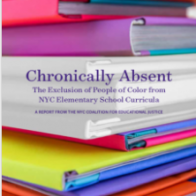The New York City Department of Education has joined a number of other education school districts to adopt a ‘culturally responsive curriculum’. The decision follows the publication of a research report published by the NYC Coalition for Educational Justice (CEJ), which highlighted a “lack of representation, diversity and inclusivity” in the district's teaching materials.
The CEJ’s report on Culturally Responsive Education found that the vast majority of books recommended for the K-5 grade curriculum, were by white authors while only 8 were by Black authors, 7 by Asian authors, 6 by Latino authors, 1 by a Native American author and not a single one had an author of Middle Eastern descent.
The report recommended that the NYC Department of Education should develop and implement a Culturally Responsive Curriculum (CRE) that recognizes multiple forms of diversity (e.g., race, social class, gender, language, sexual orientation, nationality, religion, ability) as indispensable sources of knowledge for teaching and learning, and assets that contribute to positive academic outcomes. A a culturally responsive education should: relate academic study to contemporary issues and students’ experiences; foster positive academic, racial and cultural identities; develop students’ ability to connect across cultures; cultivate critical thinking and love with learning; and empower students as agents of social change.
The report also recommended that all NYC public schools are supported to offer a variety of classes, curricula, projects and resources that are grounded in the rich diversity of the NYC student population supported by more diverse, contemporary and culturally accurate texts and resources authored by and featuring characters representative of the diverse populations of NYC.
For the full CEJ report see:
http://www.nyccej.org/wp-content/uploads/2019/02/CEJ-Chronically-Absent-Exec-Sum-FINAL.pdf